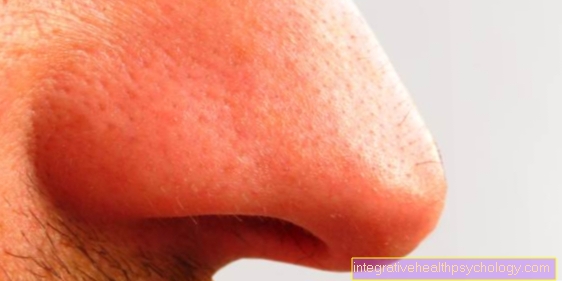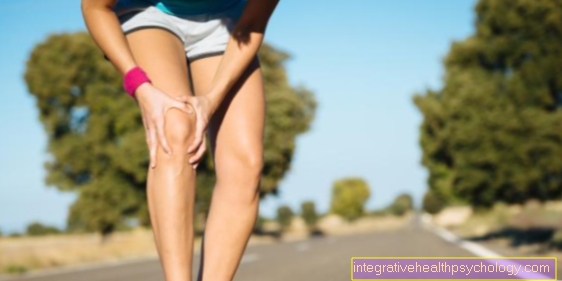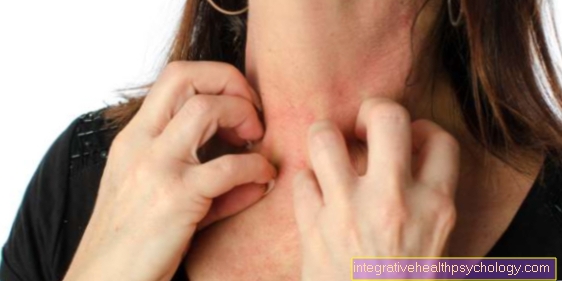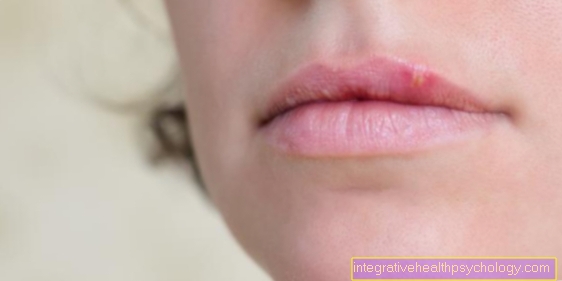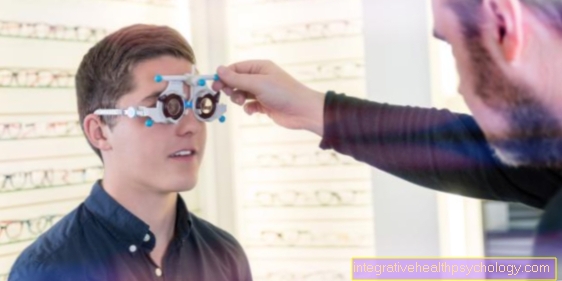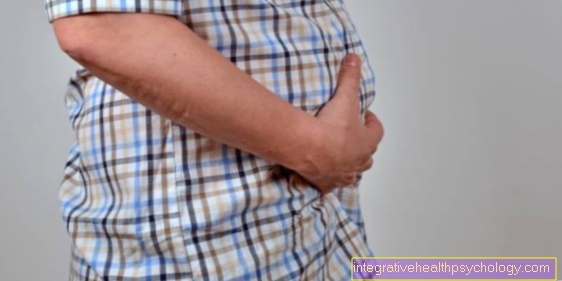Therapy of peripheral arterial occlusive disease (PAD)
How is peripheral arterial occlusive disease treated?
Therapy depends on the stage of peripheral arterial disease. In the stadium I. and II is the goal that Walking distance to improve and thus to reduce the patient's discomfort. On the other hand, in stages III and IV, the affected extremity (usually the Lower) to receive.
One distinguishes one causal and a symptomatic Therapy of peripheral arterial occlusive disease:
- The causal therapy aims to eliminate the risk factors in order to remove the basis of the disease, i.e. to prevent the progression of arteriosclerosis.
- The symptomatic therapy, on the other hand, aims to alleviate the symptoms and eliminate the changes caused by arteriosclerosis.
Stage-appropriate therapy of PAD
- Occupational therapy (Walking training): Stage I-II
- Drug therapy: stage II-IV
- Revascularization (reopening of vessels): Stage II-IV
- Infection and wound treatment: Stage IV
- amputation: Stage IV
In principle, the existing Risk factors eliminated become. This includes giving up the Smoking, optimal Diabetes mellitus -Treatment, treatment of a High blood pressure (Hypertension), as well as treatment of a lipid metabolism disorder (causal therapy).
For this should be on a healthy nutrition Be observed, as well as take place regular exercise.
In the stadium I. and II peripheral arterial disease, daily walking exercise (Occupational therapy) occur. The aim is to strengthen the bypass circuits (collaterals) and thus to achieve an adequate supply of blood and oxygen to the tissue. For this, the patients should take about daily 1 – 1 ½ Hours of walking at intervals. This means that if pain occurs, you stop and if it subsides, you continue training. Walking or PAOD groups are also available for this. In the course of this training, the pain-free walking distance should increase.
Occupational therapy should not take place when the blood supply is in Stage II is already very limited, as well as in stages III and IV, since the high level of exposure here carries the risk of a critical oxygen deficiency with tissue damage.
Sport and PAOD
In general, exercise and endurance sports are recommended for PAD patients, always within the scope of the possibilities and in consultation with the treating doctor (e.g. Nordic walking).
This can lower LDL cholesterol (the “bad” cholesterol) and positively influence other circulatory parameters such as blood pressure, cardiac output and pulse.
Since many patients also have changes in the coronary arteries (Coronaries) as part of a KHK (Coronary heart disease), complications can be prevented.
Local action
In addition, should local action taken to prevent injury and improve wound healing. This includes careful Foot care (e.g. regular application of lotion for rough skin, pedicures and wearing comfortable shoes). Further measures can be taken in stages III and IV in particular. This is how she helps Lower legsto improve blood circulation, and cotton bandages can prevent pressure damage.
Note: heat application
On the other hand, heat applications should be avoided, as more oxygen is required here. This can damage the fabric!
If tissue damage of any kind has already occurred, treatment of this is of course also indicated. However, this will be carried out by the doctors / nursing staff and is individually dependent on the damage present.
Medical therapy
Also a broad one medicinal Therapy is possible:
- So drugs that worsen blood circulation should omitted become. These include e.g. ? -Blocker (Beta blockers).
- In every patient, it makes sense to inhibit platelet aggregation ("blood thinning"; in reality, however, the blood is not thinned, but only makes it more difficult for the blood platelets (thrombocytes) to stick together). This is done using ASASS 100S (aspirin). Doses of 100mg / d - 300mg / d are prescribed. If side effects occur or an intolerance is known, it is possible to switch to clopidogrel (75mg / d). More recent studies (CAPRIE study) even suggest that clopidogrel is more effective than ASA in peripheral arterial occlusive disease (PAD).
- The anticoagulation (anticoagulation) by Marcumar, however, should only take place if there are other reasons. This may be necessary if there has been an arterial embolism (vascular occlusion) or in the case of special types of arterial occlusion.
- If restoration of the vessel diameter using catheter measures (see below) was not successful, the stage III and IV Prostanoids administered. However, these are administered intravenously rather than in tablet form, i. injected directly into the vein.
Even if an operation is planned, the time can be bridged with prostanoids until then.
Of course, the circulatory disorder can also be treated with homeopathic medicines. Please read on: Homeopathy for circulatory disorders.
Info: prostanoids
The drugs currently in use are called aloprostadil (Prostavasin®, a prostaglandin E1) and iloprost (Ilomedin®, a prostacyclin derivative). These drugs provide a (temporary) improvement in blood flow by widening blood vessels. This enables the blood to better overcome the constriction and a better supply through bypass circuits (collaterals) is possible. They also have other effects, e.g. the gluing of the blood platelets is inhibited (platelet aggregation inhibition) and the metabolic situation in the undersupplied (ischemic) area is improved through various effects.
- The improvement of the blood circulation by widening the blood vessels is also one of the working principles of another drug, the cilostazol (Pental®, a so-called PDE-3 inhibitor (phosphodiesterase-3 inhibitor)). However, no long-term data are yet available. The American specialist societies recommend these drugs, the German guidelines are currently being revised.
- Another procedure known as isovolemic hemodilutation, a blood thinning, is said to improve the blood circulation. However, this is only indicated in special cases when there are excessive numbers of red blood platelets (erythrocytes) (polyglobules). In this procedure, 500ml of blood are taken and, at the same time, 500ml of liquid is fed back through an infusion (usually table salt, NaCl). This reduces the viscosity of the blood. It is indicated by the hematocrit value (Hkt), which indicates the number of solid blood components in%. This dilution should achieve an Hkt of 35-40%. Due to the rare conditions in which this therapy is used, no studies on its effectiveness are yet available.
- In more advanced cases, treatment options from heart failure therapy may also be used (see topic heart failure).
Minimally invasive procedures
To directly address the constrictions of the arteries are invasive measures possible. These are divided into catheter procedures and surgical procedures. Different approaches are possible, depending on the degree and length of the constriction:
Catheter procedures are used from stage IIb. In the various procedures, a catheter is almost always advanced from the groin into the narrowed vessel. The vessel is made visible by administration of contrast medium and then different methods are used:
- In the standard PTA (percutaneous transluminal angioplasty) procedure, a so-called guide wire is advanced through the artery into the constriction. Then an inflatable balloon catheter is pushed into the constriction over this guide wire and inflated there. This causes the vessel to widen, and a stent is used to prevent further narrowing at this point (stent implantation). However, this method is only suitable for short-range constrictions or closures up to 10cm. A PTA is also not appropriate if the calcification is excessive.
- Special procedures are available for longer narrow passages. With laser, rotational or ultrasonic angioplasty, the calcifications of the arterial walls are removed using a laser, drill head or ultrasound.
- Further combinations of drug administration to dissolve occlusions, suction and PTA are possible.
surgery
The surgical measures depend on the stage of the PAD and the degree and length of the narrowing:
- If there are vascular constrictions in the large pelvic and femoral arteries (iliac and femoral arteries), an attempt can be made to peel the vessels. This is called desobliteration or thrombendarterectomy (TEA). E.g. With the help of a so-called ring stripper, the calcification and the inner part of the vessel wall (the intima) are cut out.
- In stages III and IV, it may be necessary to bridge the vessels (bypass). There are numerous possibilities. In the case of occlusions in the upper or lower leg, the "large rose vein", great saphenous vein, is usually removed to serve as a replacement. It is one of the superficial veins and runs from the foot in front of the inner ankle over the inner thigh to the groin. As it is one of the superficial veins that are responsible for only 10% of the return blood flow, removal is possible without major restrictions. It is also possible to use exogenous material instead. Usually this is Teflon (PTFE, polytetrafluoroethylene). However, this is only used when the main artery and the pelvic vessels are narrowed, since a larger vessel diameter is required here. However, not all vascular occlusions can be operated on. In the worst case, it can happen that the blood supply is so restricted that the extremity dies. Then the last option (so-called ultima ratio) is only amputation. However, before suggesting such an extreme measure, all other procedures will be carefully considered.
Since medicine is subject to constant change, new therapies are always sought. There are also some experimental therapies for PAOD, but these are only carried out in the context of clinical studies. Of course, this only takes place after a detailed examination has taken place. Gene therapies are currently being tested. With the help of certain growth factors (VEGF, rFGF-2), vascular growth is to be stimulated. In addition, therapies with bone marrow stem cells are being tested. With this procedure, the growth of the vessels should be stimulated and new vessels should also be formed.
Also read our articles:
- Thigh amputation
- Lower leg amputation
- Toe amputation.
forecast
Since the PAD depends on many factors, it is difficult to make an accurate prognosis over time. In addition to the stage, this depends very much on the extent to which the causes can be treated. So there is one bad prognosis, should that Smoke will not give up. This and a badly treated one Diabetes mellitus greatly increase the risk of re-occlusion! Amputations are also more common.
In addition, it must be taken into account to what extent the arteriosclerosis has already attacked other vessels. To the resulting Complications particularly include coronary artery disease (CHD), Narrowing of the arteries supplying the brain, and other diseases that have arisen from the risk factors.
In general, it can be said that a PAD patient has an average life expectancy of around 10 years. The main causes of death are Heart attack (~ 60%) and stroke (Apoplexy, ~ 10%). This is due to the fact that half of all patients suffer from CAD in stage II. In stage III it is already 90%! In addition, in stage III half of all patients have vascular constrictions in the arteries supplying the brain, which are caused by arteriosclerosis.
Therefore, an examination for CHD and subsequent treatment is extremely important.

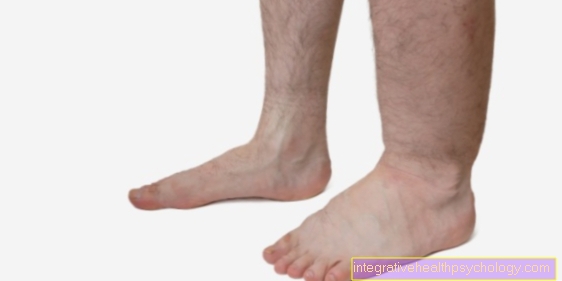


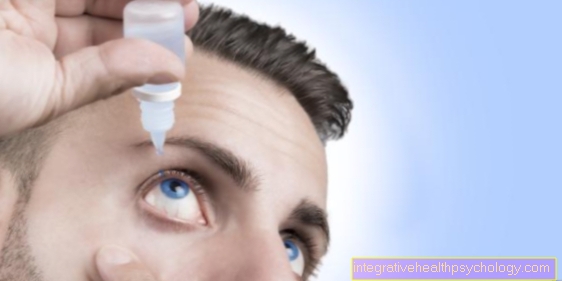
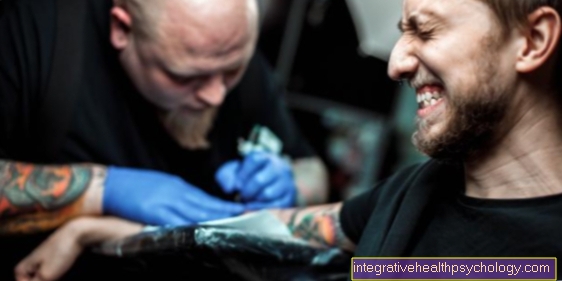
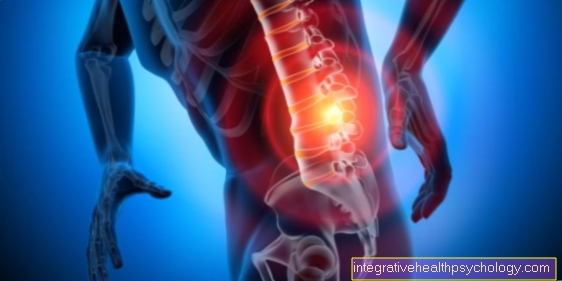



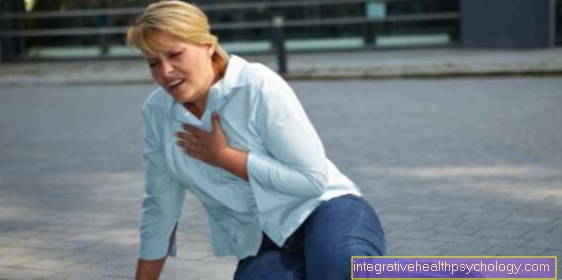
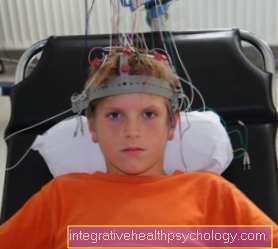
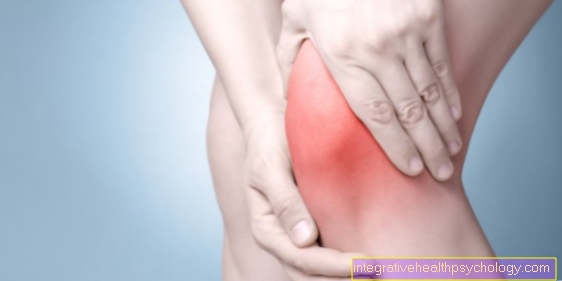


.jpg)
